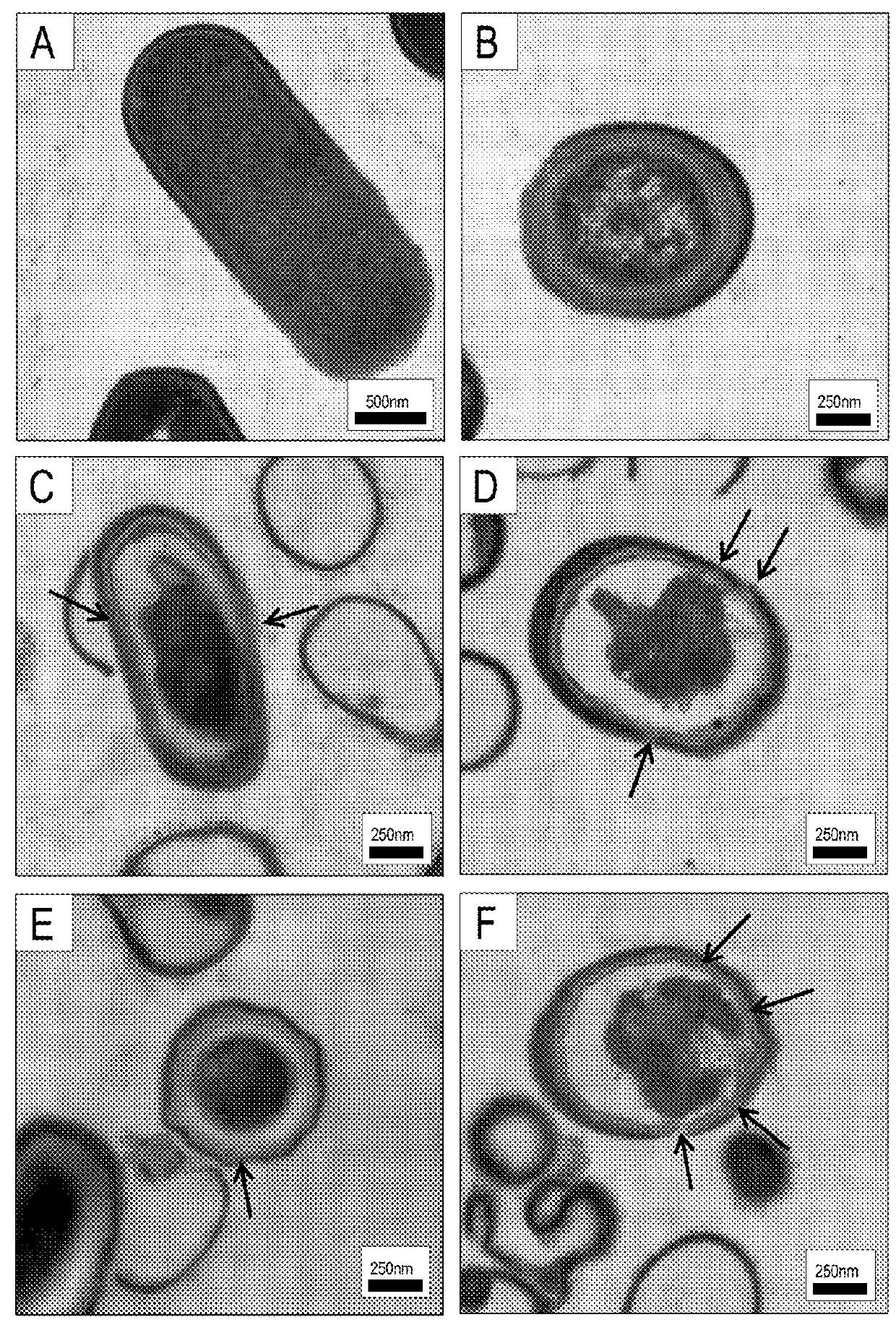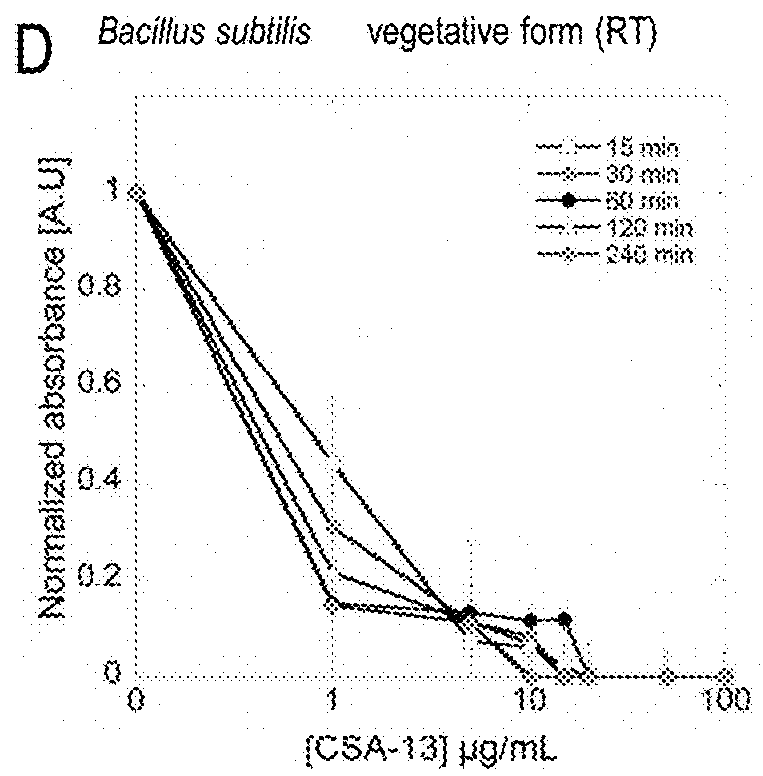Use of cationic steroidal antimicrobials for sporicidal activity
a sporicidal activity and steroidal antimicrobial technology, applied in the direction of antibacterial agents, disinfection, chemicals, etc., can solve the problems of spore membrane alterations, difficult elimination of spores in industrial and medical environments, limited application, etc., to reduce food spoilage and reduce the occurrence of foodborne illnesses
- Summary
- Abstract
- Description
- Claims
- Application Information
AI Technical Summary
Benefits of technology
Problems solved by technology
Method used
Image
Examples
example 1
[0047]This example studied the ability of a CSA compound (e.g., CSA-13) to kill sporulated bacterial, namely Bacillus subtilis ATCC 6051 spores. To prepare Bacillus subtilis ATCC 6051 spores, bacteria were grown on LB (Luria-Bertani) agar plates without antibiotics at 37° C. for 72 h. Bacteria were harvested, re-suspended in ice-cold phosphate buffered saline (PBS) solution and purified by triple centrifugation (12 000×g, 10 min, 4° C.). The spore suspension was heat treated (75° C., 15 min) to remove remaining vegetative cells, cooled, stored in water at 4° C. and protected from light until analysis. Previous studies confirmed that heat activation with subsequent cooling does not significantly affect the properties of spores and their resistance to external factors. Zhang, P., P. Setlow, and Y. Li, Characterization of single heat-activated Bacillus spores using laser tweezers Raman spectroscopy. Opt Express, 2009. 17(19): p. 16480-91. All spores used in this work were free of veget...
example 2
[0049]A viability assay of bacterial spores in the presence of a CSA compound was performed according to the protocol presented by Ghosh and Setlow. Ghosh, S. and P. Setlow, Isolation and characterization of superdormant spores of Bacillus species. J Bacteriol, 2009. 191(6): p. 1787-97. Spore suspensions in PBS were brought to 108 CFU / mL and incubated with various concentrations of CSA-13. To evaluate the effect of treatment time on the killing properties of the antibiotic, incubation was performed for 15, 30, 60, 120 and 240 min, respectively. To investigate the effect of temperature on sporicidal properties, incubation at room temperature (RT) and at 70° C. was performed. After incubation, the plates were transferred to ice and suspensions were diluted 10- to 1000-fold in PBS. Then, 10 μL aliquots were spotted on LB agar plates for overnight culture at 37° C. and CFUs were determined. Cell survival, after exposure to the tested agent, was expressed as percent of control.
[0050]FIG....
example 3
[0053]As an additional confirmation of results, the presence of a metabolically active fraction of cells was investigated using MTT assay. After incubation of spores with various concentrations of CSA-13 in a non-growing medium (PBS), 20 μL of MTT solution (thiazolyl blue tetrazolium bromide, Sigma-Aldrich, St Louis, Mo., USA, 5 mg / mL) and 100 μL of LB medium broth were added. Incubation at 37° C. was continued for 8 h. Medium was removed, and 100 μL of dimethyl sulfoxide solution (DMSO) was added to dissolve the MTT precipitate. Cells were allowed to stand at room temperature (RT) for 10 min with shaking. Absorbance values were detected at a wavelength of 570 nm using a microplate spectrophotometer. Absorbance values obtained in control spores cultures (without a tested agent) were taken as 100%. As positive controls, 1 M HCl (for spore treatment at RT) and 70% ethanol (for spore treatment at 70° C.) were employed. The average of all the experiments was presented in comparison to t...
PUM
 Login to View More
Login to View More Abstract
Description
Claims
Application Information
 Login to View More
Login to View More - R&D
- Intellectual Property
- Life Sciences
- Materials
- Tech Scout
- Unparalleled Data Quality
- Higher Quality Content
- 60% Fewer Hallucinations
Browse by: Latest US Patents, China's latest patents, Technical Efficacy Thesaurus, Application Domain, Technology Topic, Popular Technical Reports.
© 2025 PatSnap. All rights reserved.Legal|Privacy policy|Modern Slavery Act Transparency Statement|Sitemap|About US| Contact US: help@patsnap.com



